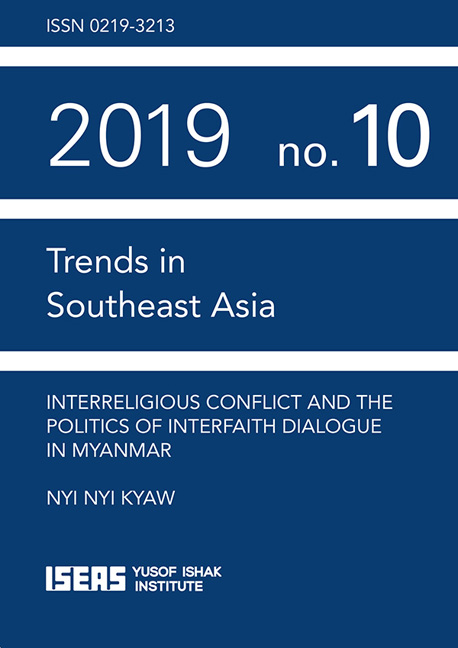Interreligious Conflict and the Politics of Interfaith Dialogue in Myanmar
Published online by Cambridge University Press: 23 January 2020
Summary
EXECUTIVE SUMMARY
• Amidst successive episodes of interreligious violence in Myanmar between 2012 and 2014, interfaith dialogue emerged as a crucial conflict resolution and prevention mechanism.
• The 2011–16 Union Solidarity and Development Party administration often indirectly promoted the use of interfaith dialogue to defuse interreligious tensions and conflicts, though its political will was questionable. Various governmental, intergovernmental, and non-governmental actors have engaged in interfaith dialogue, peace, and harmony initiatives in the past seven years.
• The present National League for Democracy administration has more actively sought to engage in intrafaith promotion of Buddhism and in interfaith peace and harmony initiatives. Intergovernmental, international and local interfaith actors also work in the interfaith dialogue field, but their impact is relatively weak because the government remains the most important actor in Myanmar in transition.
• Although the National League for Democracy has largely eliminated Buddhist nationalist groups such as Ma Ba Tha, Buddhist identity politics remains influential after the Arakan Rohingya Salvation Army's attacks in Rakhine State in 2016 and 2017 and the consequent refugee crisis.
• Although extreme anti-Muslim Buddhist identity politics may not see a resurgence in the approach to the 2020 general elections, it may come back in more nuanced forms. Interfaith dialogue and other training and activities for interreligious peace and harmony will thus remain relevant to the political scene.
- Type
- Chapter
- Information
- Publisher: ISEAS–Yusof Ishak InstitutePrint publication year: 2019



